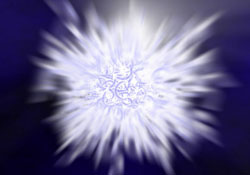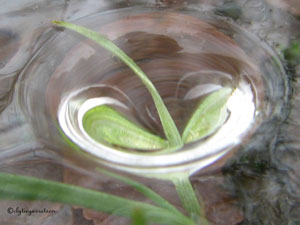
grief
“To find a safe journey through grief to growth does not mean one should forget the past. It means that on the journey we will need safe pathways so that remembrance, which may be painful, is possible.” ~ Donna O’Toole
Grief is a resident in the shadow side of life, a place we do our best to avoid. It’s dark and clouds the clarity of our minds; it’s heavy and weighs on our hearts, making them ache. It touches the core of our deepest vulnerability and opens it up. We are forced to see that impermanence and mortality are part of our reality. Grief threatens us and sometimes terrifies us. It’s no surprise we have a hard time talking about it.
“You cannot heal what you do not feel.” I heard this at a workshop many years ago and there we have the conundrum of grief. We have an instinct to protect ourselves from pain but if we are to heal our loss we have to feel how much it hurts. We don’t want to do that! To heal, we have to move from grieving to mourning. We have to go beyond just having all the feelings we call grief and begin to actively and consciously give expression to them. There are many ways to do this, but the most common one is to talk about it.
THE BEAUTY OF AVOIDANCE
 All feelings are charged with energy. When you are so excited you jump up and down, that is the energy of your feelings translated into motion. Grief is a powerhouse and when it comes roaring at us like a freight train, sometimes the only thing we can do is derail it. We shut our feelings off and go numb for self-protection. This is psychological anesthetic and like any other it wears off. When it does we find other ways to keep pain away. We distract ourselves by focusing intensely on other things or we withdraw until we feel safely beyond grief’s reach. Anything that takes attention away from our feelings will do the trick. This is called instant pain relief and that is exactly what most of us need at first. We need to steady ourselves enough to get through each day and avoidance works!
All feelings are charged with energy. When you are so excited you jump up and down, that is the energy of your feelings translated into motion. Grief is a powerhouse and when it comes roaring at us like a freight train, sometimes the only thing we can do is derail it. We shut our feelings off and go numb for self-protection. This is psychological anesthetic and like any other it wears off. When it does we find other ways to keep pain away. We distract ourselves by focusing intensely on other things or we withdraw until we feel safely beyond grief’s reach. Anything that takes attention away from our feelings will do the trick. This is called instant pain relief and that is exactly what most of us need at first. We need to steady ourselves enough to get through each day and avoidance works!
WHEN BEAUTY BECOMES A BEAST
 Problems arise when short-term avoidance becomes a long term solution. Unresolved loss is a barrier to healing that acts like a dam. If your thoughts and feelings are not somehow expressed, the energy they carry can’t be released. It keeps building up just like rising waters. Feelings of grief and isolation all intensify. You are the container for all this energy and eventually you will reach maximum capacity. That’s when it starts to overflow and leak out in ways that can be destructive and cause even more pain.
Problems arise when short-term avoidance becomes a long term solution. Unresolved loss is a barrier to healing that acts like a dam. If your thoughts and feelings are not somehow expressed, the energy they carry can’t be released. It keeps building up just like rising waters. Feelings of grief and isolation all intensify. You are the container for all this energy and eventually you will reach maximum capacity. That’s when it starts to overflow and leak out in ways that can be destructive and cause even more pain.
THE FEAR FACTOR
Loss is a villain in our fast paced, get-ahead world so it follows that tolerance is low for the grief that comes with it. It is like the bogeyman, a scary, ominous thing cloaked in mystery, lurking in the shadows of our minds. Largely because of our fear of it, our natural, human response to loss has become demonized in society. Intuitively we know grief has tremendous power and in the shock of our loss we are vulnerable and afraid it might overwhelm us. Our top priority is to protect ourselves from any more upheaval. Fear’s purpose is to alert us to any threat and keep us safe. So we will not beckon grief from the shadows until we feel sure that we can stand secure in the face of it and not lose ourselves in the pain of it. We need to have found stable ground again and restored some of our strength. We need to have loving support around us to bolster us and help us through. When we are able to let grief come out of the dark toward us we give ourselves the opportunity to see it in a different way.
LOVE’S REFLECTION
 Somber, foreboding grief has another side. It is love reflected. Have you ever thought of it that way? Grief can only be an expression of love for if we did not love what has been lost, we would not feel grief. It is an affirmation of love that will remain forever present amidst the absence. It has a story to tell about who we are; about our capacity to give and receive love, often in complex and difficult circumstances; about our ability to allow it to permeate our souls, shape who we are and enrich our lives; about our shared humanity and the deep human need for connection that holds the web of life together. We need to honour and respect grief, not reject it. We need to remember that when we acknowledge it, we are acknowledging love.
Somber, foreboding grief has another side. It is love reflected. Have you ever thought of it that way? Grief can only be an expression of love for if we did not love what has been lost, we would not feel grief. It is an affirmation of love that will remain forever present amidst the absence. It has a story to tell about who we are; about our capacity to give and receive love, often in complex and difficult circumstances; about our ability to allow it to permeate our souls, shape who we are and enrich our lives; about our shared humanity and the deep human need for connection that holds the web of life together. We need to honour and respect grief, not reject it. We need to remember that when we acknowledge it, we are acknowledging love.
Just as our physical bodies rush to repair cuts and bruises on our skin, grief is our psyche’s immediate healing response to the emotional wound of loss. It is not bad. It is not a problem in need of a solution. A safe haven is needed in which we can heal our loss and create a peaceful place for it to reside within us. A void has been left where there was once something cherished and valued. The process of grieving and mourning doesn’t fill the void, but rather helps its jagged edges soften and come closer together. Healing is a process of integrating the experience of loss into the totality of our lives. As that happens, there will temporarily be some intense pain to endure. Gradually it will ease. Traces will remain, however, even after a process of deep mourning. This may be experienced occasionally throughout your life. It’s love’s echo calling back to you.

